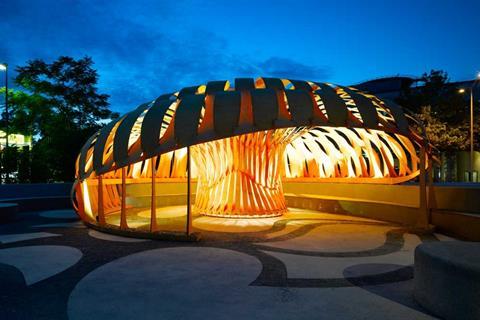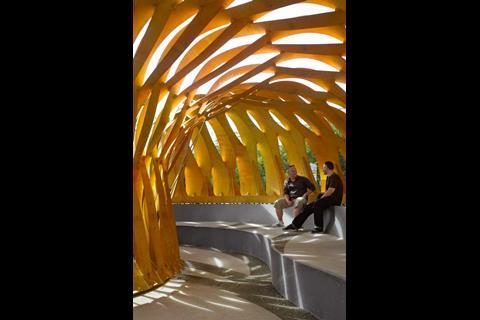Pavilion made of bendy plywood pushes the limits of computing and structural design tools
The pavilion is the work of Stuttgart University’s computational design and building departments. Instead of designing a structure and then finding a suitable material, they decided on the material, plywood - chosen for its availability, reasonable price and bendy nature - and then designed the structure around it. The building pushes the limits of what can be done with computing and structural design tools.
Matthew Mouncey’s verdict
The emphasis here seems to be on engineering; testing the structural tolerances of, in this case, plywood boards.
Having the emphasis firmly placed on said experimentation, cutting-edge computing and calculations hold the key to this pavilion. Bearing this in mind, the final scheme is still not only incredibly beautiful, but dynamic in the purest sense of the word. The pavilion has its downsides, though, being made simply of plywood it has little or no chance of standing up to the elements for any reasonable length of time.
Cutting-edge computing and calculations hold the key to this pavilion, Matthew Mouncey
This raises a rather questionable debate. Can this pavilion be described as an architectural structure at all? Having been conceived and built by engineering and computing departments, and observed as a merited piece of art? Whichever the answer, one thing is for sure; nobody can deny how inspiring it is, be it for engineers, artists, or architects.
Edward Atkins verdict
This project continues the tradition of architecture pavilions as fun and experimental. The Stuttgart pavilion combines the use of clever designing and computer technology. To create the domed shape, it was designed around a material chosen for to its material properties, plywood. The end result is an interesting, playful space where the light filtering through the structure creates a calming atmosphere.
The creativity used in this design to take an ordinary material to its limits is to be applauded. Although it didn’t work in the long term, it is the ingenuity of the project that should be the focus. I only wish I could have been involved in a similar project here!
Matthew Mouncey and Edward Atkins are architecture students at Nottingham Trent University
Source
Email nargess@me.com if you wish to take part in First Impressions.





























No comments yet